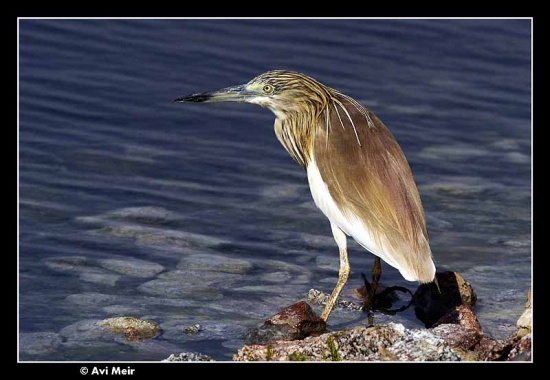- Ardeola ralloides
Identification
42–47 cm (16½-18½ in)
- Short neck
- Thick dark bill, with greenish tip
- Pale buff-brown back, with faint violet sheen
- Greenish legs
- Summer adults have elongated neck feathers. Bill black and blue; legs pink during courtship period
Flight
The white wings are concealed when on the ground, the bird looking light brown, in flight it appears almost all white.
Distribution
Breeding range very patchy across southern Europe from Iberia to the Balkans and Ukraine. Also in parts of Turkey, the Middle East, Morocco and Egypt and east to Turkmenistan and Afghanistan. In decline in many areas through the drainage of wetlands but the first breeding for Sardinia was recorded in 1985 and the Balearics in 1997.
Has a wide but scattered distribution in sub-Saharan Africa from Senegal to Sudan and Somalia and south to the Cape.
Taxonomy
This is a monotypic species[1].
Habitat
Freshwater swamps, ponds and ditches, often with very small areas of water, also larger waterbodies with dense vegetation, especially reedbeds with scattered willows.
Behaviour
Breeding
They nest in small colonies, at shallow marshy lakes, ponds and rivers with reeds. The nest is usually on platforms of sticks in trees or bushes. Three or four eggs are laid.
Diet
The diet consists mostly of insect larva such as flies, mayflies and dragonflies with the addition of fish too.
Vocalisation
References
- Clements, J. F., T. S. Schulenberg, M. J. Iliff, D. Roberson, T. A. Fredericks, B. L. Sullivan, and C. L. Wood. 2018. The eBird/Clements checklist of birds of the world: v2018. Downloaded from http://www.birds.cornell.edu/clementschecklist/download/
- Handbook of the Birds of the World Alive (retrieved June 2016)
- Collins Field Guide 5th Edition
- Collins Bird Guide ISBN 0 00 219728 6
Recommended Citation
- BirdForum Opus contributors. (2024) Squacco Heron. In: BirdForum, the forum for wild birds and birding. Retrieved 18 April 2024 from https://www.birdforum.net/opus/Squacco_Heron
External Links
GSearch checked for 2020 platform.1






